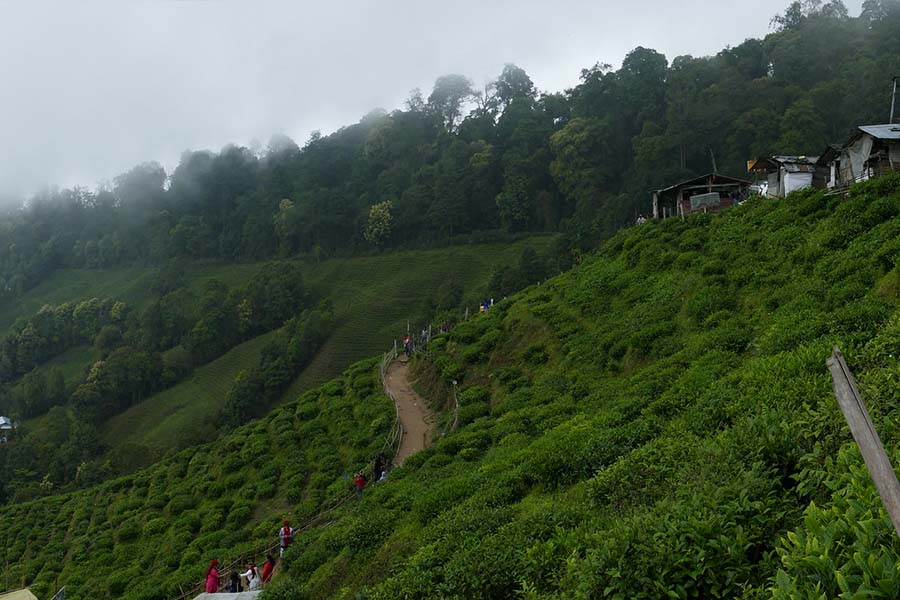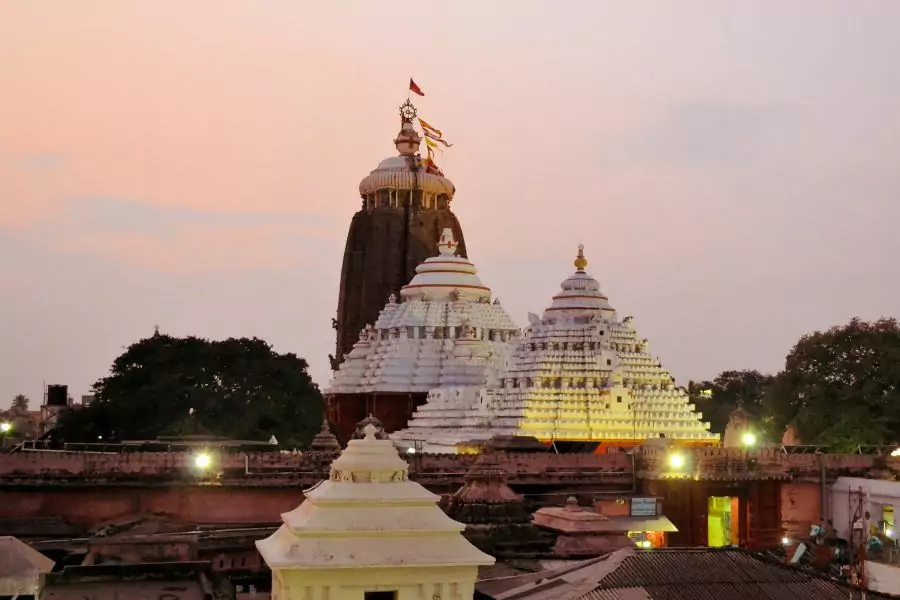Bodhgaya India Tour – Mahabodhi Temple, Day Trip, Tips for Visitor

Bodhgaya, located in Bihar, India, stands as one of the most revered pilgrimage sites for Buddhists around the world. This sacred town is where Prince Siddhartha Gautama attained enlightenment under the Bodhi Tree, becoming the Buddha. For anyone seeking spiritual insight or simply wanting to experience a place steeped in history and tranquility, Bodhgaya offers an unforgettable experience.
Mahabodhi Temple: The Enlightenment Site

The Mahabodhi Temple complex, a UNESCO World Heritage Site, remains the central attraction in Bodhgaya. Built at the exact spot where the Buddha attained enlightenment, the temple features a towering spire that soars 55 meters into the sky. The Bodhi Tree, a direct descendant of the original tree, offers a serene space for meditation and reflection. The temple complex includes sacred sites like the Vajrasana (Diamond Throne) and several smaller stupas. Pilgrims and visitors often walk around the temple, chanting and meditating, creating an atmosphere filled with devotion and peace.
Bodhi Tree: The Symbol of Enlightenment

The Bodhi Tree, where Siddhartha Gautama meditated and achieved enlightenment, symbolizes spiritual awakening and knowledge. Today, thousands of devotees and tourists visit the tree to meditate and offer prayers. The tree’s tranquility and the surrounding peaceful atmosphere make it an ideal spot for introspection and spiritual practice.
Great Buddha Statue: A Symbol of Peace

The Great Buddha Statue, standing 80 feet tall, remains one of Bodhgaya’s iconic landmarks. This magnificent statue, made of sandstone and red granite, depicts Buddha in a meditative pose and radiates a sense of calm and serenity. Surrounding the statue, smaller sculptures of Buddha’s disciples further add to the site’s spiritual ambiance.
International Monasteries: A Global Spiritual Experience
Bodhgaya houses several monasteries built by Buddhist communities from various countries, each reflecting their unique architectural style and cultural heritage. These monasteries not only serve as places of worship but also offer a glimpse into the global influence of Buddhism.
- Thai Monastery: Known for its stunning Thai architecture, this monastery features a beautiful golden statue of Buddha and serene gardens that offer a peaceful retreat.
- Japanese Monastery (Indosan Nipponji): This monastery showcases Japanese architecture with its clean lines and minimalist design. The prayer hall hosts a large, serene statue of Buddha.
- Tibetan Monastery: Known for its vibrant prayer flags and intricate murals, this monastery offers a vivid experience of Tibetan Buddhist culture.
- Bhutanese Monastery: This temple, with its colorful murals and traditional Bhutanese design, offers a serene environment with Zen gardens and Buddha statues. A large bell here allows visitors to ring for peace.
- Sri Lankan Monastery: This monastery, a replica of the famous Kandy Temple in Sri Lanka, features intricate carvings and a peaceful atmosphere.
Each monastery in Bodhgaya represents the architectural and cultural heritage of its country, making a visit to these temples a journey through the diverse world of Buddhism.
Best Time to Visit Bodhgaya
The ideal time to visit Bodhgaya is during the winter months, from October to March, when the weather stays cool and pleasant. This period also sees the most festivals and religious events, including the grand celebration of Buddha Purnima, marking the birth, enlightenment, and death of Buddha. The Kalachakra Festival, a major Tibetan Buddhist event, also takes place during this time, drawing thousands of monks, devotees, and tourists from around the world. Summers in Bodhgaya can get extremely hot, with temperatures rising above 40°C, while the monsoon season (July to September) brings heavy rainfall, making travel challenging.
Accommodation Options in Bodhgaya
Bodhgaya offers various accommodation options to suit different budgets and preferences. Whether you’re looking for luxury, mid-range, budget, or even monastery stays, the town provides something for everyone:
- Luxury Hotels: For those seeking comfort, Bodhgaya has several luxury hotels offering modern amenities, fine dining, and spa services. These hotels are conveniently located near the main attractions.
- Mid-range Hotels: Travelers looking for a balance between comfort and affordability can find several mid-range hotels and guesthouses. These places provide clean, comfortable rooms with basic amenities and are usually close to the Mahabodhi Temple complex.
- Budget Accommodations: Budget travelers can choose from several guesthouses and dormitories offering simple yet clean rooms at affordable rates. Some monasteries also provide lodging to pilgrims and tourists, offering a unique experience of living in a spiritual environment.
- Monastery Stays: Several monasteries in Bodhgaya offer accommodations to visitors, often at a nominal fee. Staying at a monastery immerses you in the monastic lifestyle, allowing participation in meditation sessions and experiencing the tranquility of the place.
Booking your accommodation in advance is advisable, especially during peak tourist season, to ensure availability and secure the best rates.
Spiritual Practices and Meditation in Bodhgaya
Bodhgaya offers not just sightseeing but also opportunities for spiritual practice and meditation. The town hosts many meditation centers and retreats offering courses in Buddhist teachings, mindfulness, and meditation. These centers attract both beginners and advanced practitioners, offering a peaceful environment to deepen spiritual practice. Some popular meditation centers include the Vipassana Meditation Center, Root Institute for Wisdom Culture, and Tergar Monastery. Whether you’re a seasoned meditator or just beginning your spiritual journey, Bodhgaya provides the perfect setting to explore meditation and mindfulness.
Cultural Significance and Local Life
Bodhgaya serves not only as a spiritual hub but also as a vibrant cultural center. The town hosts a diverse mix of monks, pilgrims, tourists, and local residents. Local markets offer a treasure trove of handicrafts, souvenirs, and religious artifacts, ideal for shopping and experiencing local culture. You can find prayer flags, Buddha statues, Tibetan jewelry, and traditional clothing. In the evenings, cultural performances, including traditional dance and music, offer a glimpse into the region’s rich cultural heritage.
Day Trips and Excursions from Bodhgaya
While Bodhgaya itself provides numerous spiritual and cultural experiences, several nearby attractions also merit exploration on a day trip:
- Rajgir: Located about 70 kilometers from Bodhgaya, Rajgir is an ancient city that once served as the capital of the Magadha kingdom. Known for its hot springs, ancient caves, and historical sites associated with Buddha and Jainism, Rajgir offers a fascinating visit.
- Nalanda: Just 90 kilometers from Bodhgaya, Nalanda is home to the ruins of the ancient Nalanda University, one of the oldest and most prestigious educational institutions globally. Now a UNESCO World Heritage Site, it offers a fascinating glimpse into India’s ancient academic heritage.
- Dungeshwari Cave Temples: Situated around 12 kilometers from Bodhgaya, these caves are believed to be where Siddhartha practiced asceticism before attaining enlightenment. The caves house small shrines and offer a serene environment for meditation.
- Gaya: A short drive from Bodhgaya, Gaya stands as another important pilgrimage site, particularly for Hindus. The Vishnupad Temple, dedicated to Lord Vishnu, attracts many visitors along with several other ancient temples and ghats.
These day trips allow you to explore the historical and cultural richness of the region, adding depth to your Bodhgaya tour.
Tips for Visitors
To ensure a smooth and fulfilling experience during your Bodhgaya tour, consider these tips:
- Dress Modestly: Since Bodhgaya is a religious site, dressing modestly, especially when visiting temples and monasteries, is advisable. Comfortable, lightweight clothing works best.
- Respect Local Customs: Be mindful of local customs and practices, especially when visiting religious sites. Remove your shoes before entering temples and avoid taking photos where prohibited.
- Stay Hydrated: Carry a water bottle, especially during warmer months, to stay hydrated while exploring the town.
- Book in Advance: Bodhgaya can get crowded during peak tourist season, so it’s wise to book accommodation and transportation in advance.
- Keep Valuables Safe: Bodhgaya is generally safe, but keeping your valuables secure and being aware of your surroundings, especially in crowded places, is always a good idea.
Conclusion
Bodhgaya offers more than just a tourist destination; it represents a journey into the heart of spirituality. Whether seeking inner peace, exploring the roots of Buddhism, or simply enjoying the tranquil ambiance, Bodhgaya promises an unparalleled experience. The town’s rich history, cultural diversity, and spiritual significance make it a must-visit for travelers from all walks of life. As you walk in the footsteps of the Buddha, Bodhgaya will not only touch your mind but also stir your soul, leaving you with lasting memories and insights.
FAQs
- What is the best time to visit Bodhgaya?
The best time to visit Bodhgaya is from October to March, during the winter months when the weather remains cool and pleasant. - Are there entry fees for the Mahabodhi Temple?
No, Mahabodhi Temple does not charge entry fees, but donations are welcome. - Can I meditate under the Bodhi Tree?
Yes, visitors can meditate under the Bodhi Tree, a common practice among pilgrims and tourists. - What are the accommodation options in Bodhgaya?
Bodhgaya offers a range of accommodations, including luxury hotels, mid-range guesthouses, budget options, and monastery stays. - How safe is Bodhgaya for solo travelers?
Bodhgaya is generally safe for solo travelers, but it’s advisable to stay cautious, especially in crowded areas.


